Cherry trees (Prunus avium for sweet cherries and Prunus cerasus for sour cherries) are popular fruit-bearing trees known for their beautiful blossoms, ornamental appeal, and nutrient-rich fruit. Growing cherry trees from seeds is a rewarding but long-term process that allows gardeners to cultivate unique, home-grown trees without relying on nursery stock. This guide provides a comprehensive step-by-step approach to growing cherry trees from seeds, covering seed selection, stratification, planting, care, and maintenance.
Why Grow Cherry Trees From Seeds?
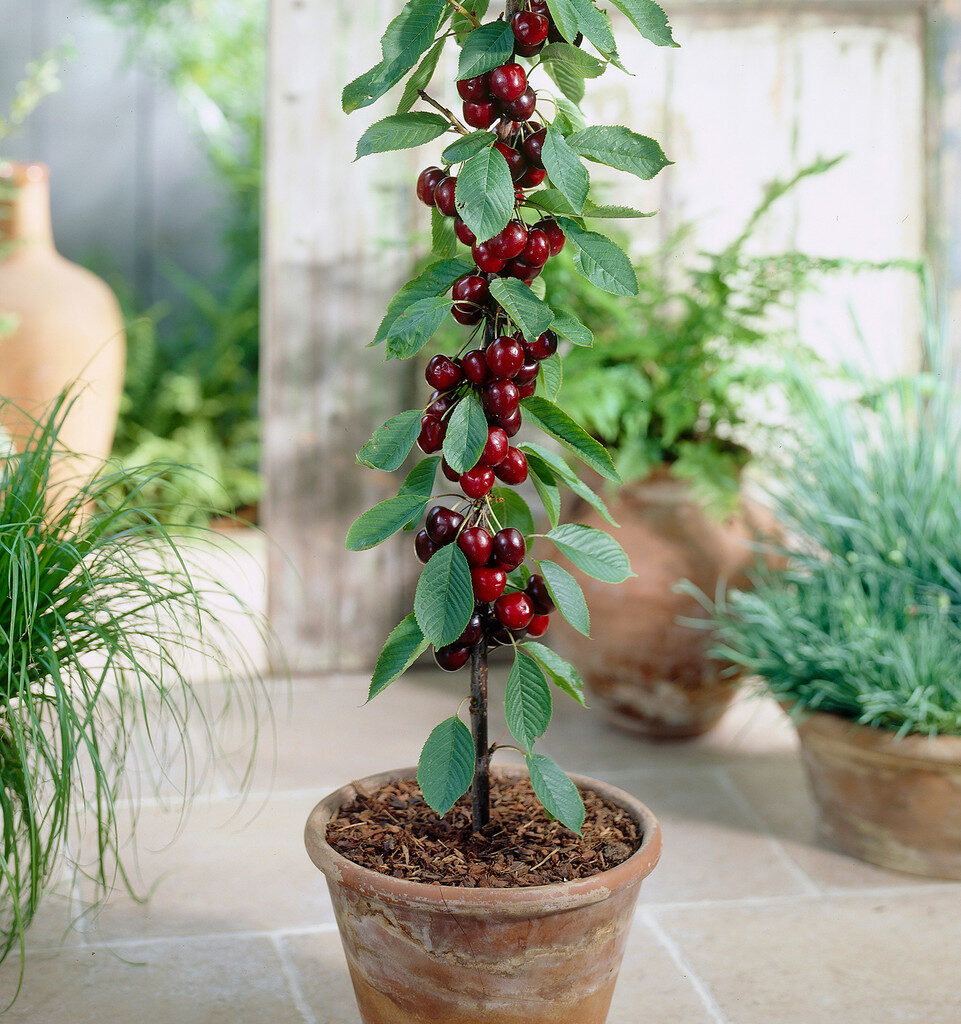
Growing cherry trees from seeds offers several advantages:
- Cost-Effective: Eliminates the need to purchase young saplings or grafted trees.
- Satisfaction: Provides a sense of achievement by nurturing a tree from the very beginning.
- Genetic Diversity: Seed-grown trees may develop unique traits in fruit, blossoms, or growth habit.
- Adaptation: Trees grown from local seeds may better adapt to regional soil, climate, and pests.
- Educational Value: Ideal for beginners and children to learn about plant germination and growth cycles.
However, growing from seeds requires patience, as cherry trees take several years (typically 3–7 years) to bear fruit.
Selecting the Right Cherry Seeds
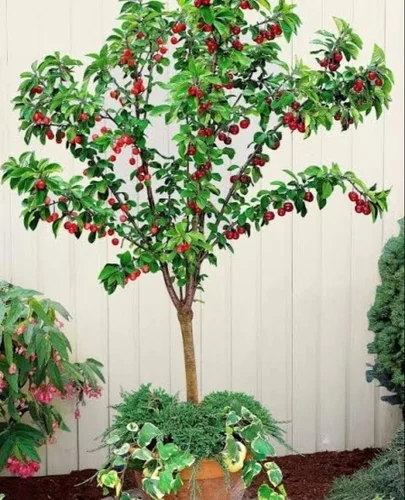
Choosing healthy seeds is critical for successful germination:
- Fruit Type: Decide whether to grow sweet or sour cherries depending on taste preferences and climate.
- Seed Selection: Use fresh, ripe cherries from trusted sources. Avoid seeds from overly processed or preserved fruits.
- Seed Condition: Look for plump, firm seeds free of cracks, mold, or damage.
Tip: Sweet cherry seeds generally require more care due to their dormancy and cold stratification needs.
Preparing Cherry Seeds for Germination
Cherry seeds have a hard outer shell and require stratification to break dormancy:
Step 1: Cleaning the Seeds
- Remove all fruit flesh to prevent fungal growth.
- Wash seeds thoroughly and let them dry for 24 hours.
Step 2: Cold Stratification
Cold stratification simulates winter conditions to encourage germination:
- Wrap seeds in a damp paper towel or mix with moist sand or peat moss.
- Place seeds in a sealed plastic bag to retain moisture.
- Refrigerate at 1–4°C (34–39°F) for 8–12 weeks.
- Check periodically to ensure seeds remain moist and free from mold.
Stratification is essential; without it, cherry seeds are unlikely to germinate.
Planting Cherry Seeds
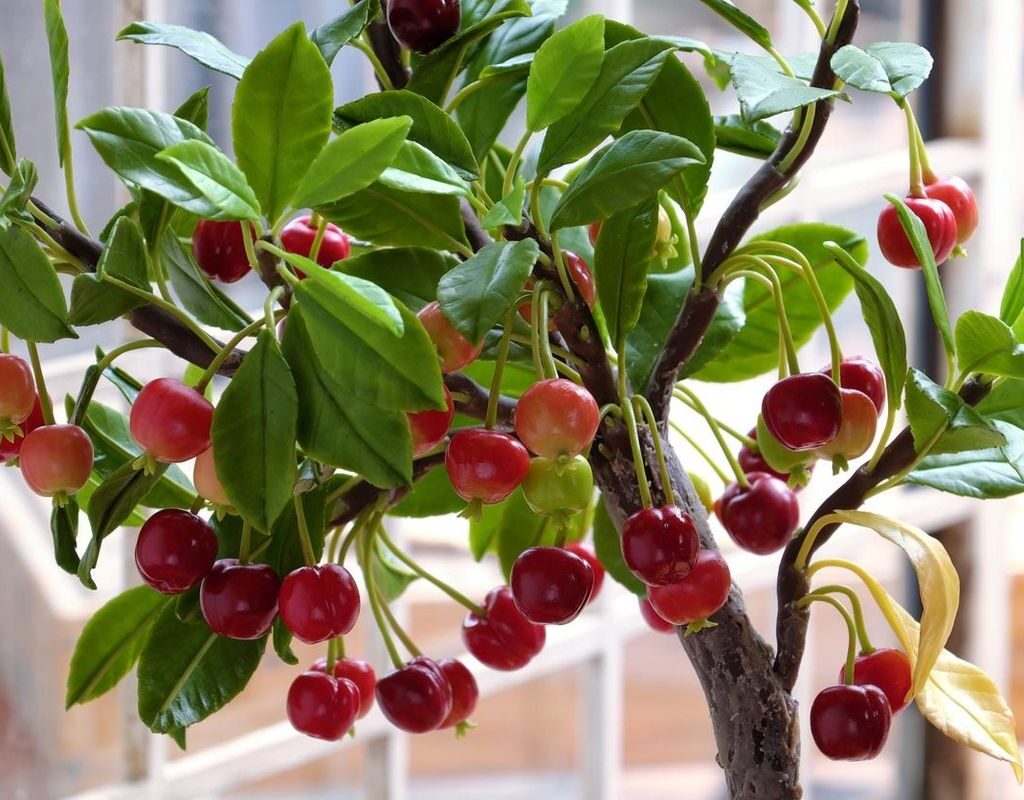
After stratification, cherry seeds are ready to be planted:
Step 1: Choosing a Container and Soil
- Containers: Use seed trays, small pots, or biodegradable pots for easy transplantation.
- Soil: Well-draining, fertile soil with a pH of 6.0–7.0 is ideal. A mix of garden soil, compost, and sand (2:1:1) works well.
Step 2: Planting Depth
- Plant seeds ½–1 inch deep in soil.
- Cover lightly with soil and water gently.
Step 3: Positioning and Temperature
- Place pots in a warm, bright location with indirect sunlight.
- Maintain a temperature of 20–25°C (68–77°F) for optimal germination.
Step 4: Watering
- Keep soil consistently moist but not waterlogged.
- Avoid overwatering, as excess moisture can cause seeds to rot.
Step 5: Germination Time
- Cherry seeds typically germinate within 2–4 weeks after stratification, though some may take longer.
- Thin seedlings to one per container if multiple seeds germinate together.
Transplanting Seedlings
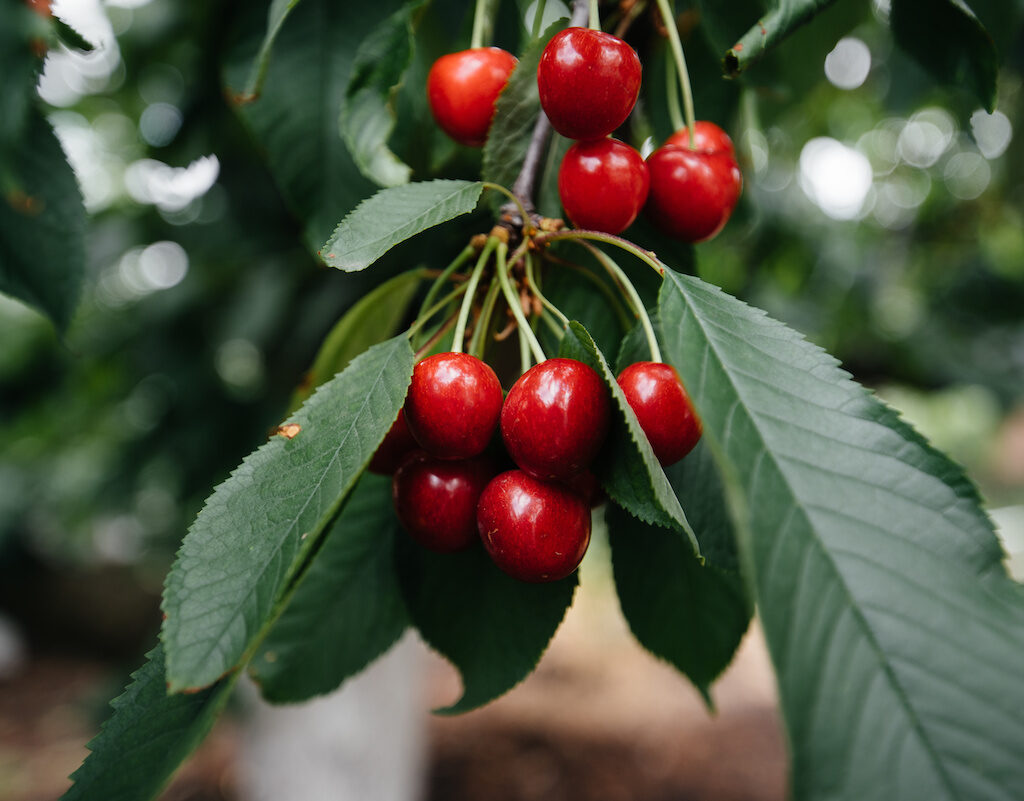
Once seedlings develop 2–3 sets of true leaves, they can be transplanted:
- Prepare Larger Pots: Use 8–12 inch pots for further growth.
- Soil Preparation: Mix well-draining soil with compost for nutrients.
- Transplant Carefully: Gently lift seedlings to avoid damaging delicate roots.
- Watering: Water immediately after transplanting to settle the soil.
- Light: Provide 6–8 hours of indirect sunlight or use grow lights for indoor growth.
Caring for Young Cherry Trees
Young cherry trees require consistent care to establish strong roots and healthy foliage:
Sunlight
- Cherry trees need at least 6–8 hours of full sunlight daily for optimal growth and flowering.
Watering
- Water seedlings regularly, keeping soil moist but not saturated.
- Reduce watering slightly during cooler months to prevent root rot.
Fertilization
- Use a balanced, slow-release fertilizer during the growing season (spring and summer).
- Avoid over-fertilizing, as it can promote foliage growth at the expense of strong roots.
Pruning
- Prune seedlings to remove damaged or weak branches.
- Encourage a strong central leader (main stem) for structural stability.
Pest and Disease Management
Cherry trees are susceptible to several pests and diseases. Preventive measures include:
- Aphids: Spray with insecticidal soap or neem oil.
- Cherry Fruit Fly (for outdoor trees): Use netting and traps to protect future fruits.
- Fungal Diseases: Ensure good air circulation and avoid wetting foliage excessively.
- Root Rot: Avoid waterlogged soil; use well-draining containers.
Regular monitoring and preventive care are key to maintaining healthy cherry trees.
Transplanting to Outdoor Soil
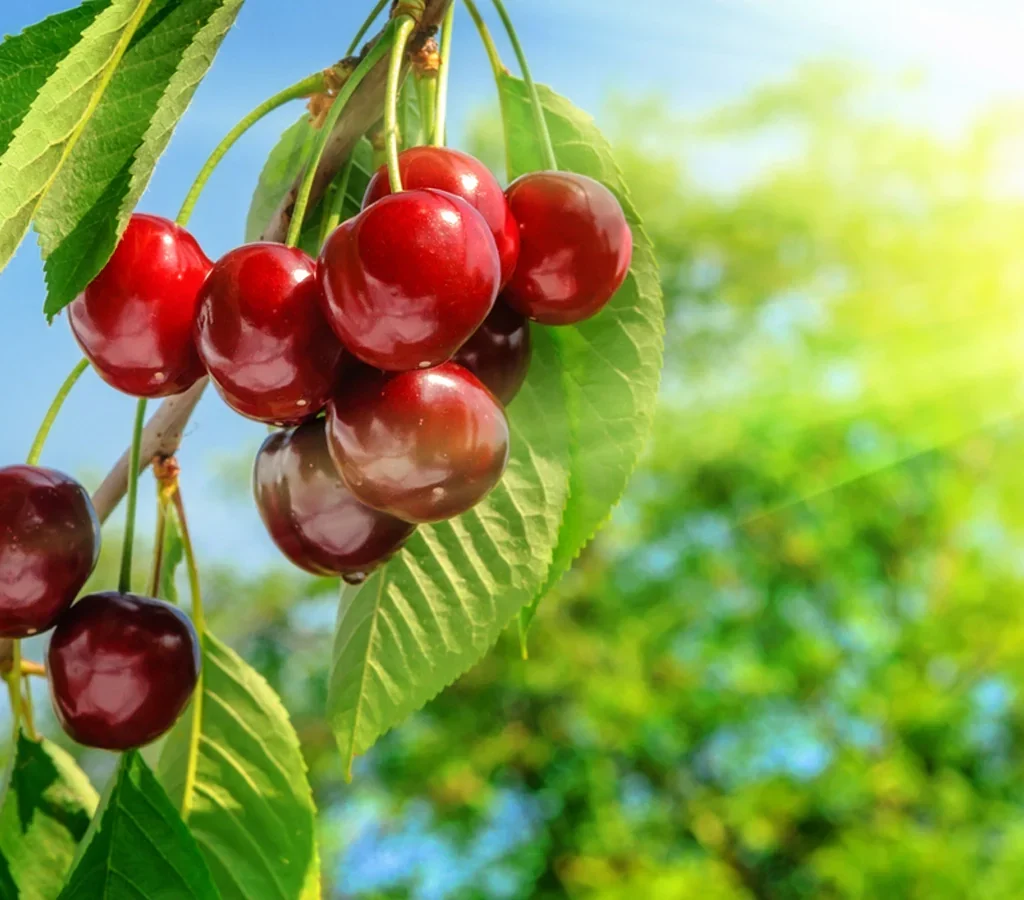
After 6–12 months or when seedlings are sturdy, they can be moved outdoors:
- Site Selection: Choose a sunny location with well-draining soil. Avoid low-lying areas prone to waterlogging.
- Soil Preparation: Incorporate organic compost or well-rotted manure into garden soil.
- Planting: Dig a hole slightly larger than the root ball, place the seedling, and backfill gently.
- Watering: Water thoroughly after planting and mulch around the base to retain moisture.
- Spacing: Allow at least 10–15 feet between cherry trees to support mature growth and airflow.
Flowering and Fruiting
- Cherry trees usually begin flowering 3–7 years after planting from seed.
- Flowers bloom in early spring, with fruit maturing in late spring to early summer.
- Cross-pollination may be required for some sweet cherry varieties, so consider planting multiple trees or compatible cultivars nearby.
Harvesting Cherry Fruits
- Timing: Harvest cherries when they are fully colored, firm, and slightly soft to the touch.
- Method: Gently twist or snip fruits to avoid damaging branches.
- Storage: Keep cherries refrigerated and consume within a few days for best flavor.
Tips for Successful Cherry Tree Cultivation
- Patience: Growing cherry trees from seeds requires several years before fruiting.
- Healthy Seeds: Always start with fresh, high-quality seeds.
- Cold Stratification: Do not skip stratification; it is essential for germination.
- Sunlight: Ensure adequate sunlight for leaves, flowers, and fruit development.
- Pruning: Maintain tree structure and airflow by pruning regularly.
- Pest Monitoring: Regularly inspect seedlings and mature trees for pests and diseases.
- Mulching: Helps retain moisture and regulates soil temperature.
Benefits of Growing Cherry Trees
- Nutritious Fruits: Rich in vitamins C and A, antioxidants, and fiber.
- Ornamental Beauty: Beautiful blossoms enhance garden aesthetics.
- Environmental Contribution: Trees provide shade, improve air quality, and attract pollinators.
- Educational Value: Ideal for teaching children about plant growth cycles and patience.
- Culinary Uses: Fresh cherries can be eaten raw, made into jams, desserts, or beverages.
Conclusion
Growing cherry trees from seeds is a rewarding experience that combines patience, care, and long-term planning. By selecting high-quality seeds, properly stratifying them, and following the steps outlined for planting, care, and maintenance, gardeners can cultivate healthy, productive cherry trees.
While it may take several years to enjoy the first fruits, the process fosters a strong connection with nature, offers valuable lessons in plant care, and ultimately results in a home-grown tree that provides nutritious cherries, beautiful blossoms, and enhanced garden aesthetics.
Following this step-by-step guide, beginners and experienced gardeners alike can successfully grow cherry trees from seeds and enjoy the satisfaction of nurturing a plant from its very beginning to fruit-bearing maturity.
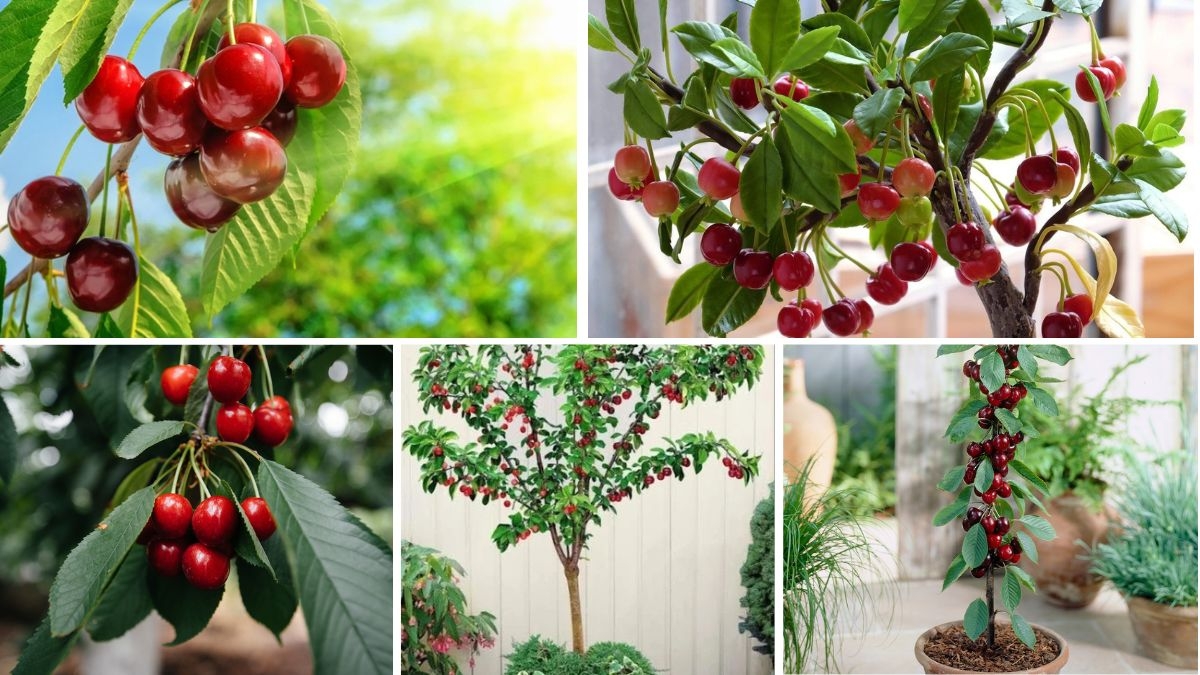
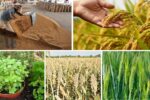


Leave A Comment